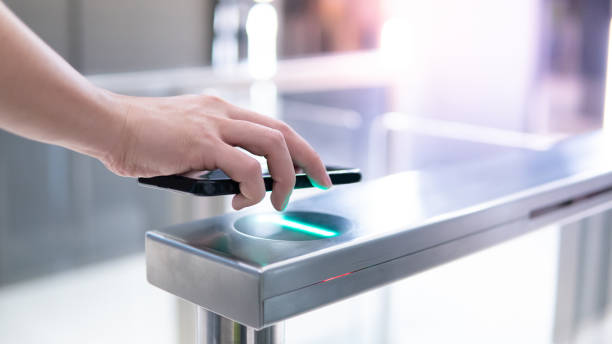6 Key Omnichannel Retail Challenges and How to Solve Them
Decoding the Retail Business Puzzle.
If you claimed ten years ago that online shopping was the future, you must have been mocked or singled out sarcastically.
Surprisingly, that's what happens. The retail business is growing day by day. Today you wake up to the digital babble of e-commerce brands providing everything you could possibly need.
From consumables and clothing to electronics and upholstery, everything is available online. We can open any e-commerce application, browse the available inventory, choose what we need and add it to the cart. But how? It's not just retail; the omnichannel retail that is driving the strength of today's market.
Omnichannel retail is a unified business communication and operational strategy that ensures a brand's product reaches the customer at a specific time. It includes different delivery options, supply chain techniques, dropshipping, and marketing automation, to name a few.
Contextualizing the buyer's experience throughout their buying journey with omnichannel commerce software nurtures them in a better and more relevant way.
Now let's see what the obstacles are to a successful omnichannel retail strategy.
What are the challenges of omnichannel retail?Challenges of omnichannel retail include synchronizing customer purchase orders, supply chain management, and order fulfillment. These challenges also arise when companies take a one-dimensional marketing approach, resulting in low consumer engagement.
Creating this seamless experience for your consumers has always been a distant dream for brands. If a brand is targeting a lead generation platform, chances are it's dropping a whole box of interested leads from a secondary source. An omnichannel retail strategy solves this problem by unifying all of your prospects in one central location.
Not so long ago, companies also understood that the roadmap to a successful product lay in the user experience. Everything should flow naturally, from the moment visitors arrive on your website to the moment they add an item to their cart. Even after purchasing an item, the experience must be maintained until he receives it. However, the approach was very different in the early days of the Internet.
History of omnichannel retail strategy
Today, most well-known retailers started their digital journey with a single channel. They needed a proper framework for allocating lead sources and prioritizing consumers. Moreover, their logistics, distribution and supply chain also operated in silos. Unaware of what was to come, most of their prospects shifted their interest to a competing brand. They changed because they needed a brand to meet their needs with a better product. Multi-channel retail strategyNo matter how simple "one-channel" delivery is, brands eventually had to revamp it. Thus was born the concept of "multi-channel retail", which allowed customers to choose their preferred traffic channel to interact with the brand. And on the other hand, it has allowed brands to better understand consumers. Brands have also coined the idea of “around the clock” availability, where they get in touch as soon as customers initiate an action.
The only problem with the multi-channel strategy was that it had to provide a central repository to manage consumer data. Everything the consumer purchased, whether through a website, social media, or storefront, could not be tracked properly. This lack of information further hampered demand forecasting, resulting in poor inventory lead times. The problem needed an immediate solution, and that solution was omnichannel retail.
Omnichannel business strategyIn 2003, Best Buy made a decision that forever revolutionized retail with an "omnichannel retail strategy". It has also unified all of its customer service efforts into one system. This framework was based on omnichannel communication and lean manufacturing, which promoted end-to-end retail funnel management.
When the customer puts items in the cart, a purchase order (PO) is triggered in the Best Buy system, which alerts the seller and supplier. The consumer receives a calculated ETD (estimated delivery time) while the backend supply chain works on manufacturing. Customers could pick up the finished item from the retail store on the due date. No worries, no fuss.
If customers are unhappy with their orders, the omnichannel retail strategy captures their concerns through brand messaging. Customers can either escalate the issue or call the help desk to initiate a specific resolution.
As seductive as this pr...

Decoding the Retail Business Puzzle.
If you claimed ten years ago that online shopping was the future, you must have been mocked or singled out sarcastically.
Surprisingly, that's what happens. The retail business is growing day by day. Today you wake up to the digital babble of e-commerce brands providing everything you could possibly need.
From consumables and clothing to electronics and upholstery, everything is available online. We can open any e-commerce application, browse the available inventory, choose what we need and add it to the cart. But how? It's not just retail; the omnichannel retail that is driving the strength of today's market.
Omnichannel retail is a unified business communication and operational strategy that ensures a brand's product reaches the customer at a specific time. It includes different delivery options, supply chain techniques, dropshipping, and marketing automation, to name a few.
Contextualizing the buyer's experience throughout their buying journey with omnichannel commerce software nurtures them in a better and more relevant way.
Now let's see what the obstacles are to a successful omnichannel retail strategy.
What are the challenges of omnichannel retail?Challenges of omnichannel retail include synchronizing customer purchase orders, supply chain management, and order fulfillment. These challenges also arise when companies take a one-dimensional marketing approach, resulting in low consumer engagement.
Creating this seamless experience for your consumers has always been a distant dream for brands. If a brand is targeting a lead generation platform, chances are it's dropping a whole box of interested leads from a secondary source. An omnichannel retail strategy solves this problem by unifying all of your prospects in one central location.
Not so long ago, companies also understood that the roadmap to a successful product lay in the user experience. Everything should flow naturally, from the moment visitors arrive on your website to the moment they add an item to their cart. Even after purchasing an item, the experience must be maintained until he receives it. However, the approach was very different in the early days of the Internet.
History of omnichannel retail strategy
Today, most well-known retailers started their digital journey with a single channel. They needed a proper framework for allocating lead sources and prioritizing consumers. Moreover, their logistics, distribution and supply chain also operated in silos. Unaware of what was to come, most of their prospects shifted their interest to a competing brand. They changed because they needed a brand to meet their needs with a better product. Multi-channel retail strategyNo matter how simple "one-channel" delivery is, brands eventually had to revamp it. Thus was born the concept of "multi-channel retail", which allowed customers to choose their preferred traffic channel to interact with the brand. And on the other hand, it has allowed brands to better understand consumers. Brands have also coined the idea of “around the clock” availability, where they get in touch as soon as customers initiate an action.
The only problem with the multi-channel strategy was that it had to provide a central repository to manage consumer data. Everything the consumer purchased, whether through a website, social media, or storefront, could not be tracked properly. This lack of information further hampered demand forecasting, resulting in poor inventory lead times. The problem needed an immediate solution, and that solution was omnichannel retail.
Omnichannel business strategyIn 2003, Best Buy made a decision that forever revolutionized retail with an "omnichannel retail strategy". It has also unified all of its customer service efforts into one system. This framework was based on omnichannel communication and lean manufacturing, which promoted end-to-end retail funnel management.
When the customer puts items in the cart, a purchase order (PO) is triggered in the Best Buy system, which alerts the seller and supplier. The consumer receives a calculated ETD (estimated delivery time) while the backend supply chain works on manufacturing. Customers could pick up the finished item from the retail store on the due date. No worries, no fuss.
If customers are unhappy with their orders, the omnichannel retail strategy captures their concerns through brand messaging. Customers can either escalate the issue or call the help desk to initiate a specific resolution.
As seductive as this pr...
What's Your Reaction?






















